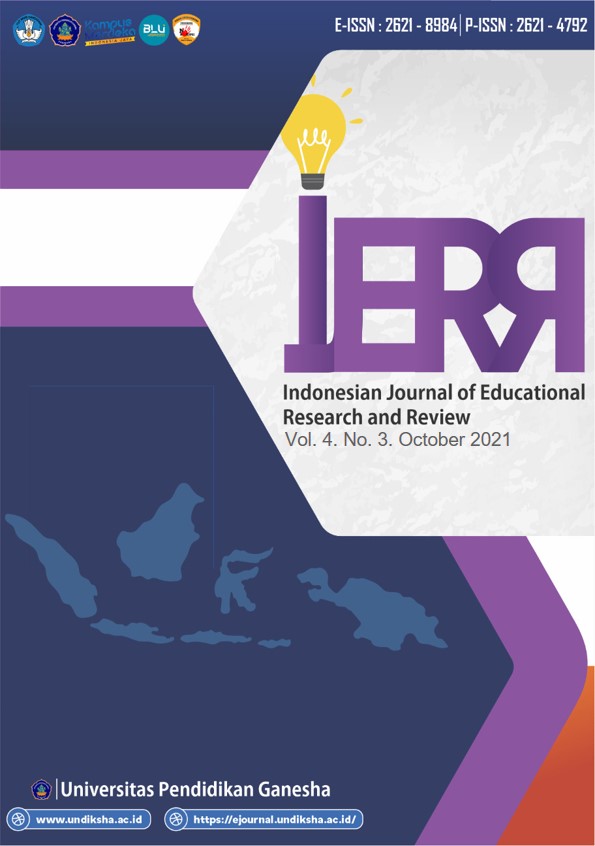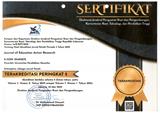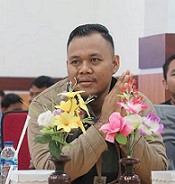Teacher Preparation, Motivation, and Self-Efficacy: A Comparative Study of New Teachers in Japan and the United States
DOI:
https://doi.org/10.23887/ijerr.v4i3.39010Keywords:
Teacher Preparation, Motivation, Self-EfficacyAbstract
Using the Teaching and Learning International Survey (TALIS) 2018, this study examines U.S. and Japanese new teachers’ initial teacher preparation (ITP), feelings of preparedness, motivations, and self-efficacy. The analysis of 355 U.S. and 433 Japanese new secondary teachers provided several findings. First, ITP in the U.S. more often included teaching in mixed-ability and multicultural settings, cross-curricular skills, and technology than Japan, and U.S. teachers felt more prepared than Japanese teachers in every category of preparation. Second, Japanese teachers were more likely to declare teaching as their first career choice and reportedly scored significantly higher on motivations to become a teacher of personal utility value, while U.S. new teachers scored higher on social utility value. Third, there were no significant differences in self-efficacy between U.S. and Japanese new teachers. This study contributes to the gap of large-scale, comparative literature between the U.S. and Japanese initial teacher preparation. Implications for practice and directions for future research are discussed.
References
Ainley, J., & Carstens, R. (2018). Teaching and learning international survey (TALIS) 2018 conceptual framework. In OECD Education Working Papers No. 187. Organisation for Economic Co-operation and Development [OECD]. https://doi.org/10.1787/19939019.
Battista, M. T. (1994). Teacher beliefs and the reform movement in mathematics education. Phi Delta Kappan, 75(2), 462–470. https://www.jstor.org/stable/20405142.
Bruinsma, M., & Jansen, E. P. (2010). Is the motivation to become a teacher related to pre‐service teachers’ intentions to remain in the profession? European Journal of Teacher Education, 33(2), 185–200. https://doi.org/10.1080/02619760903512927.
Collinson, V., & Ono, Y. (2001). The professional development of teachers in the United States and Japan. European Journal of Teacher Education, 24(2), 223–248. https://doi.org/10.1080/02619760120095615.
Darling-Hammond, L., Chung, R., & Frelow, F. (2002). Variation in teacher preparation: How well do different pathways prepare teachers to teach? Journal of Teacher Education, 53(4), 286–302. https://doi.org/10.1177/0022487102053004002.
Ferguson, P. (1985). Teacher education in Japan: A historical and comparative perspective. Journal of Teacher Education, 36(5), 20–24. https://doi.org/10.1177/002248718503600504.
Forlin, C., Kawai, N., & Higuchi, S. (2015). Educational reform in Japan towards inclusion: Are we training teachers for success? International Journal of Inclusive Education, 19(3), 314–331. https://doi.org/10.1080/13603116.2014.930519.
Goddard, R. D. (2002). Collective efficacy and school organization: A multilevel analysis of teacher influence in schools. Theory and Research in Educational Administration, 1, 169–184.
Goddard, R. D., Hoy, W. K., & Woolfolk Hoy, A. (2000). Collective teacher efficacy: Its meaning, measure, and impact on student achievement. American Educational Research Journal, 37(2), 479–508. https://doi.org/10.3102%2F00028312037002479.
Hawley, C. A., & Hawley, W. D. (1997). The role of universities in the education of Japanese teachers: A distant perspective. Peabody Journal of Education, 72(1), 233–244. https://doi.org/10.1207/s15327930pje7201_13.
Heine, S. J., & Hamamura, T. (2007). In search of east Asian self-enhancement. Personality and Social Psychology Review, 11(7), 4–27. https://doi.org/10.1177/1088868306294587.
Ho, I. T., & Hau, K. T. (2004). Australian and Chinese teacher efficacy: Similarities and differences in personal instruction, discipline, guidance efficacy and beliefs in external determinants. Teaching and Teacher Education, 20, 313–323. https://doi.org/10.1016/j.tate.2003.09.009.
Howe, E. R. (2008). Teacher induction across the Pacific: A comparative study of Canada and Japan. Journal of Education for Teaching, 34(4), 333–346. https://doi.org/10.1080/02607470802401503.
Isozaki, T. (2018). Science teacher education in Japan: Past, present, and future. Asia-Pacific Science Education, 4(10), 1–14. https://doi.org/10.1186/s41029-018-0027-2.
Iwata, Y. (2015). On ‘Japanese style’ teacher education reform: Considering issues of quality development under an ‘open system.’ Educational Studies in Japan: International Yearbook, 9, 81–97. https://doi.org/10.7571/esjkyoiku.9.81.
Izumi-Taylor, S., Lee, Y. Y., Moberly, D., & Wang, L. (2010). Reflective skills of pre-service teachers: A cross-cultural study of American and Japanese college students. Research in Comparative and International Education, 5(2), 131–143. https://doi.org/10.2304/rcie.2010.5.2.131.
Klassen, R. M., Bong, M., Usher, E. L., Chong, W. H., Huan, V. S., Wong, I. Y., & Georgiou, T. (2009). Exploring the validity of a teachers’ self-efficacy scale in five countries. Contemporary Educational Psychology, 34, 67–76. https://doi.org/10.1016/j.cedpsych.2008.08.001.
Kobayashi, T. (1993). Japan’s teacher education in comparative perspectives. Peabody Journal of Education, 68(3), 4–14. https://doi.org/10.1080/01619569309538726.
Kurman, J. (2003). Why is self-enhancement low in certain collectivist cultures?: An investigation of two competing explanations. Journal of Cross-Cultural Psychology, 34(5), 496–510. https://doi.org/10.1177/0022022103256474.
Lin, E., Shi, Q., Wang, J., Zhang, S., & Liu, H. (2012). Initial motivations for teaching: comparison between preservice teachers in the United States and China. Asia-Pacific Journal of Teacher Education, 40(3), 227-248. https://doi.org/10.1080/1359866X.2012.700047.
Liou, P. Y., Desjardins, C. D., & Lawrenz, F. (2010). Influence of scholarships on STEM teachers: Cluster analysis and characteristics. School Science and Mathematics, 110, 128–143. https://doi.org/10.1111/j.1949-8594.2010.00016.x.
Milner, R. H. (2016). Start where you are, but don’t stay there: Understanding diversity, opportunity gaps, and teaching in today’s classrooms. Harvard Education Press.
Morey, A. I., Nakazawa, K., & Colvin, C. (1997). Japanese and American student teacher voice: A comparative study of critical incidents. Peabody Journal of Education, 72(1), 203–214. https://doi.org/10.1207/s15327930pje7201_11.
Ponnock, A. R., Torsney, B. M., & Lombardi, D. (2018). Motivational differences throughout teachers’ preparation and career. New Waves Education Research & Development, 21(2), 26–45. https://eric.ed.gov/?id=EJ1211293.
Rose, J. P., Endo, Y., Windschitl, P. D., & Suls, J. (2008). Cultural differences in unrealistic optimism and pessimism: The role of egocentrism and direct versus indirect comparison measures. Personality and Social Psychology Bulletin, 34(9), 1236–1248. https://doi.org/10.1177/0146167208319764.
San, M. M. (1999). Japanese beginning teachers’ perceptions of their preparation and professional development. Journal of Education for Teaching, 25(1), 17–29. https://doi.org/10.1080/02607479919646.
Shawer, S. F. (2013). ITP: Does self-efficacy influence candidate teacher academic achievement and future career performance? Journal of Further and Higher Education, 37(2), 201–223. https://doi.org/10.1080/0309877X.2011.645448.
Shi, Q. (2014). Relationship between teacher efficacy and self-reported instructional practices: An examination of five Asian countries/regions using TIMSS 2011 data. Frontiers of Education in China, 9(4), 577–602. https://academic.hep.com.cn/fed/EN/10.3868/s110-003-014-0045-x.
Shimahara, N. K. (1995). Restructuring Japanese high schools: Reforms for diversity. Educational Policy, 9, 185–200. https://doi.org/10.1177/0895904895009002006.
Siwatu, K. O., Chesnut, S. R., Alejandro, A. Y., & Young, H. A. (2016). Examining preservice teachers’ culturally responsive teaching self-efficacy doubts. The Teacher Educator, 51(4), 277–296. https://doi.org/10.1080/08878730.2016.1192709.
Strizek, G. A., Tourkin, S., Erberber, E., & Gonzales, P. (2014). Teaching and Learning International Survey (TALIS) 2013: U.S. technical report (NCES 2015-010). National Centre for Education Statistics. https://nces.ed.gov/pubs2015/2015010.pdf.
Suzuki, S. (2014). Toward professionalisation or de-professionalisation? Teacher education over the past 40 years: A Japanese retrospection. Journal of Education for Teaching, 40(5), 524–542. https://doi.org/10.1080/02607476.2014.956538.
Tschannen-Moran, M., & Hoy, A. W. (2001). Teacher efficacy: Capturing an elusive construct. Teaching and Teacher Education, 17, 783–805. https://doi.org/10.1016/S0742-051X(01)00036-1.
Tschannen-Moran, M., Hoy, A. W., & Hoy, W. K. (1998). Teacher efficacy: Its meaning and measure. Review of Educational Research, 68(2), 202–248. https://doi.org/10.3102/00346543068002202.
Uskul, A. K., Oyserman, D., & Schwarz, N. (2010). Cultural emphasis on honour, modesty, or self-enhancement: Implications for the survey-response process. In J. A. Harkness, B. Braun, T. P. Edwards, L. Johnson, P. P. Lyberg, B.-E. Mohler, Pennell, & T. W. Smith (Eds.), Wiley series in survey methodology. Survey methods in multinational, multiregional, and multicultural contexts (pp. 191–201). John Wiley & Sons. https://doi.org/10.1002/9780470609927.ch11.
Vieluf, S., Kunter, M., & Van de Vijver, F. J. (2013). Teacher self-efficacy in cross-national perspective. Teaching and Teacher Education, 35, 92–103. https://doi.org/10.1016/j.tate.2013.05.006.
Watt, H. M. G., & Richardson, P. W. (2007). Motivational factors influencing teaching as a career choice: Development and validation of the FIT-Choice scale. The Journal of Experimental Education, 75(3), 167–202. https://doi.org/10.3200/JEXE.75.3.167-202.
Watt, H. M. G., & Richardson, P. W. (2008). Motivations, perceptions, and aspirations concerning teaching as a career for different types of beginning teachers. Learning and Instruction, 18(5), 408–428. https://doi.org/10.1016/j.learninstruc.2008.06.002.
Watt, H. M. G., Richardson, P. W., Klusmann, U., Kunter, M., Beyer, B., Trautwein, U., & Baumert, J. (2012). Motivations for choosing teaching as a career: An international comparison using the FIT-Choice scale. Teaching and Teacher Education, 28, 791–805. https://doi.org/10.1016/j.tate.2012.03.003.
Wyatt, M. (2014). Towards a re-conceptualisation of teachers’ self-efficacy beliefs: Tackling enduring problems with the quantitative research and moving on. International Journal of Research & Method in Education, 37(2), 166–189. https://doi.org/10.1080/1743727X.2012.742050.
Zeichner, K. M. (2017). The struggle for the soul of teacher education. Routledge.
Downloads
Published
How to Cite
Issue
Section
License
Authors who publish with the Indonesian Journal of Educational Research and Review (IJERR) agree to the following terms:
- Authors retain copyright and grant the journal the right of first publication with the work simultaneously licensed under a Creative Commons Attribution License (CC BY-SA 4.0) that allows others to share the work with an acknowledgment of the work's authorship and initial publication in this journal.
- Authors are able to enter into separate, additional contractual arrangements for the non-exclusive distribution of the journal's published version of the work (e.g., post it to an institutional repository or publish it in a book), with an acknowledgment of its initial publication in this journal.
- Authors are permitted and encouraged to post their work online (e.g., in institutional repositories or on their website) prior to and during the submission process, as it can lead to productive exchanges, as well as earlier and greater citation of published work. (See The Effect of Open Access)












